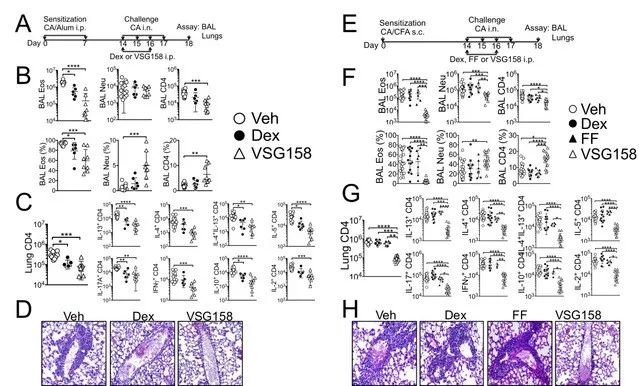Written by: Wang Xin, Li Jian, Liu Xiu
Translated by: Yang Yijing
Edited by: William Mosteller
Date: 4-10
Recently, He Yuanzheng’s research group of the Center for Life Sciences has made important achievements in the research of new glucocorticoid ligands for the treatment of severe asthma. It is the first time that the reversal of hormone resistance has been achieved in the animal model of hormone-resistant malignant asthma, which opens up a new way for the treatment of this high mortality malignant asthma. The research was published in the Proceedings of the National Academy of Sciences (PNAS) on March 20 under the title of "Development of highly potent glucocorticoids for steroid-resistant severe asthma ".
Asthma is a common respiratory disease. Generally, asthma is well controlled by a combination of glucocorticoids (anti-inflammatory) and adrenergic hormone receptor activators (smooth muscle relaxants). But severe or malignant asthma is often insensitive to glucocorticoids, a condition known as hormone resistance. Although the proportion of hormone-resistant asthma is not very high, it has a very high fatality rate and causes a great medical burden for those studying asthma. Therefore, finding a method that can reverse the resistance of lung cells to hormones is the focus of asthma research all over the world.
Researcher He Yuanzheng discovered the key secret of glucocorticoid efficacy by analyzing the structure of the glucocorticoid receptor. He applied this discovery to the design of a new high-efficiency glucocorticoid and developed a series of new high-efficiency glucocorticoid ligands. In animal models of asthma, these glucocorticoid ligands exhibit potency beyond that of the most widely used drugs. In particular, the newly designed ligand VSG158 exhibits the highest anti-inflammatory efficacy in animal models and is 10 times better than the current asthma drug, fluticasone furoate (FF). This is the first time that researchers have used small molecule drugs to reverse the symptoms of hormone resistance, which will open a new way for the treatment of hormone-resistant malignant asthma.
The work is also part of a long series of efforts by researcher He Yuanzheng to interpret important signaling pathways through structural biology and then translate them into treatments for related diseases. He Yuanzheng is the first and correspondent author of this article. Shi Jingjing (from Shanghai Institute of Pharmacy, Chinese Academy of Sciences) and Quang Tam Nguyen (from Booki Min Clinical Center, Cleveland, USA) are co-authors. Xu Huaqiang and Booki Min are co-correspondent authors.



